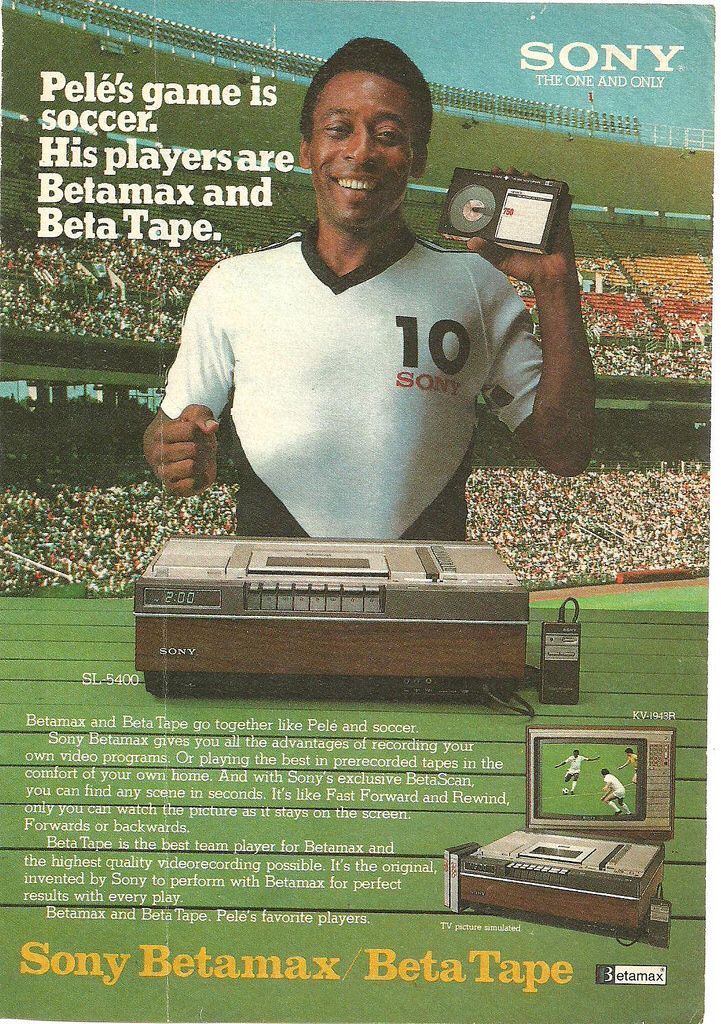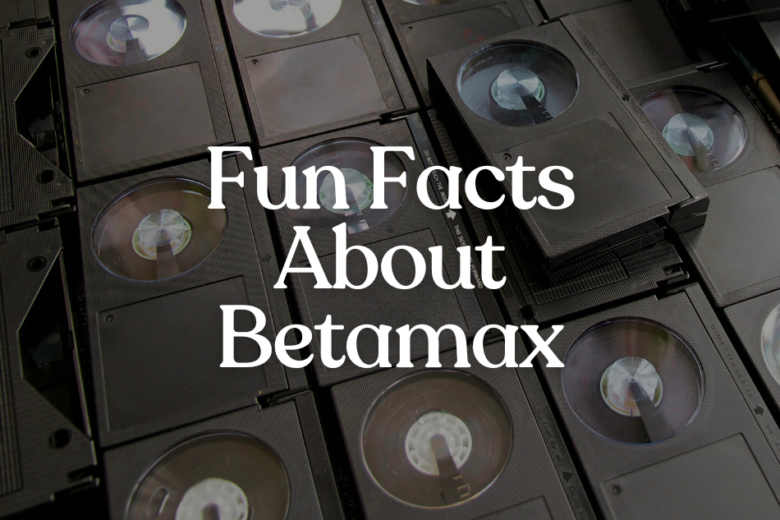Betamax tapes are arguably more famous for their failures than their successes. Despite this, they were popular in the 1970s and many families still have Sony Betamax collections sitting in their attics. But what exactly is Betamax? And is it better than VHS? If so, why did it fail?
In this article, we discuss everything you need to know about these old relics and answer your burning questions. Let’s get started!
WHAT IS BETAMAX?
Betamax is a VCR (Video Cassette Recorder) that was made by the Japanese company Sony. The technology built upon Sony’s earlier professional U-Matic system, making it smaller and more practical for consumer use. Betamax’s strengths included its small tape size and high audio and image quality. Its drawbacks, on the other hand, included a limited recording time of one hour and a high price tag.
Sony came up with the name “Betamax” through the project’s original nickname. Part of the development process centered around removing the guard band that separated the recording tape. With this gone, they could add more tape and therefore record more. The team referred to this as “gapless” recording, which translates as “Betta” recording in Japanese.
This prompted “Beta” as a potential product name, which was a perfect fit since the shape of the tape loading system happened to look like the Greek letter “β (beta).” The team also liked that “beta” sounded like the English word “better” — because that’s what their product was! After adding “max” (from “maximum”) to further impress consumers, the name Betamax was born.

WHEN DID BETAMAX COME OUT?
Sony’s Betamax system was first released in Japan on May 10, 1975, and reached America in November of the same year. In both regions, it was well over a year later that VHS systems were released, giving Betamax time to build its popularity.
HOW LONG DID BETAMAX LAST?
To many consumers, it felt like Betamax had fizzled out by the start of the 1990s. The ED-Beta (Extended Definition) tapes which were released in 1988 were the last consumer Betamax product ever made, but by this point, they were competing against DVDs, and they didn’t win.
However, just because Sony didn’t release any new Betamax technology after this, doesn’t mean they disappeared. Sony kept manufacturing Betamax recorders until 2002 and produced blank Betamax tapes until 2016, as the format was still used in Japan and South America, and remained popular with Betamax hobbyists.
WAS BETAMAX BETTER THAN VHS?
In a lot of ways, Sony’s Betamax was a higher quality product than VHS because it had better audio quality, better color reproduction, and faster rewind and fast-forwarding. It also allowed users to fast-forward to specific points in the tape, making it easier and quicker to find certain recordings. The tapes themselves were also smaller than the VHS versions, though it’s uncertain just how beneficial that was.
The two main limitations of Betamax were its recording time of one hour, and the fact that it was proprietary technology. This meant that only companies Sony licensed Betamax to could make compatible products — and they only licensed it to 10 other companies.
JVC, the makers of VHS, on the other hand, thought that home video technology should be an open standard. They shared the VHS standard freely, which meant that any company anywhere could develop compatible products. Unsurprisingly, this led to hundreds of companies selling VHS products, which increased accessibility and drove down prices.
On top of this, VHS tapes could record for two hours — double the amount of Betamax tapes. This gave consumers more value for their money and let them record longer forms of media like movies or sports matches. Eventually, VHS tapes could record over four hours of material, which meant even American football fans could record full games.

WHY DID BETAMAX FAIL?
In the end, the strengths of Sony’s Betamax just weren’t that relevant to the needs of the public. Better image and audio quality weren’t a deciding factor for many consumers with older TVs, and VHS made sure their tapes matched typical broadcasting quality so they didn’t really feel inferior. Combined with its longer recording time, this put VHS far ahead of Betamax in terms of meeting consumer needs.
JVC’s open standard strategy also turned out to be much more successful than Sony’s licensing plan. With so many products available from various companies and aimed at various budgets, VHS was simply easier to buy. Plus, once one family member or friend had chosen VHS, it made sense for others to buy compatible products so they could all share tapes.
The idea of sharing tapes also led to another of JVC’s key strategies — the video rental market. They worked with American motion picture companies to help launch the industry, making sure, of course, that they prioritized the VHS format.
Sony did eventually release tapes that could record for longer, but it took too long to turn the competition around.
ARE BETAMAX TAPES WORTH ANYTHING?
Betamax tapes, along with other obsolete video formats like LaserDisc, can be popular collectible items. Of course, value depends greatly on the rarity of the tape, the condition it’s in, and what’s on it. You can find some tapes — often of live shows from famous bands — selling for as much as $120, while more common items sell for under $20. If you have a large collection, the overall worth could be pretty high!
DIGITIZE YOUR BETAMAX TAPES
Of course, selling your old Betamax tapes doesn’t mean you have to say goodbye to what’s on them. By digitizing your collection first, you can keep everything from old movie recordings to home videos, and make sure they’re safe from damage or degradation. Contact us at EverPresent to get an estimate for digitizing your collection today.

